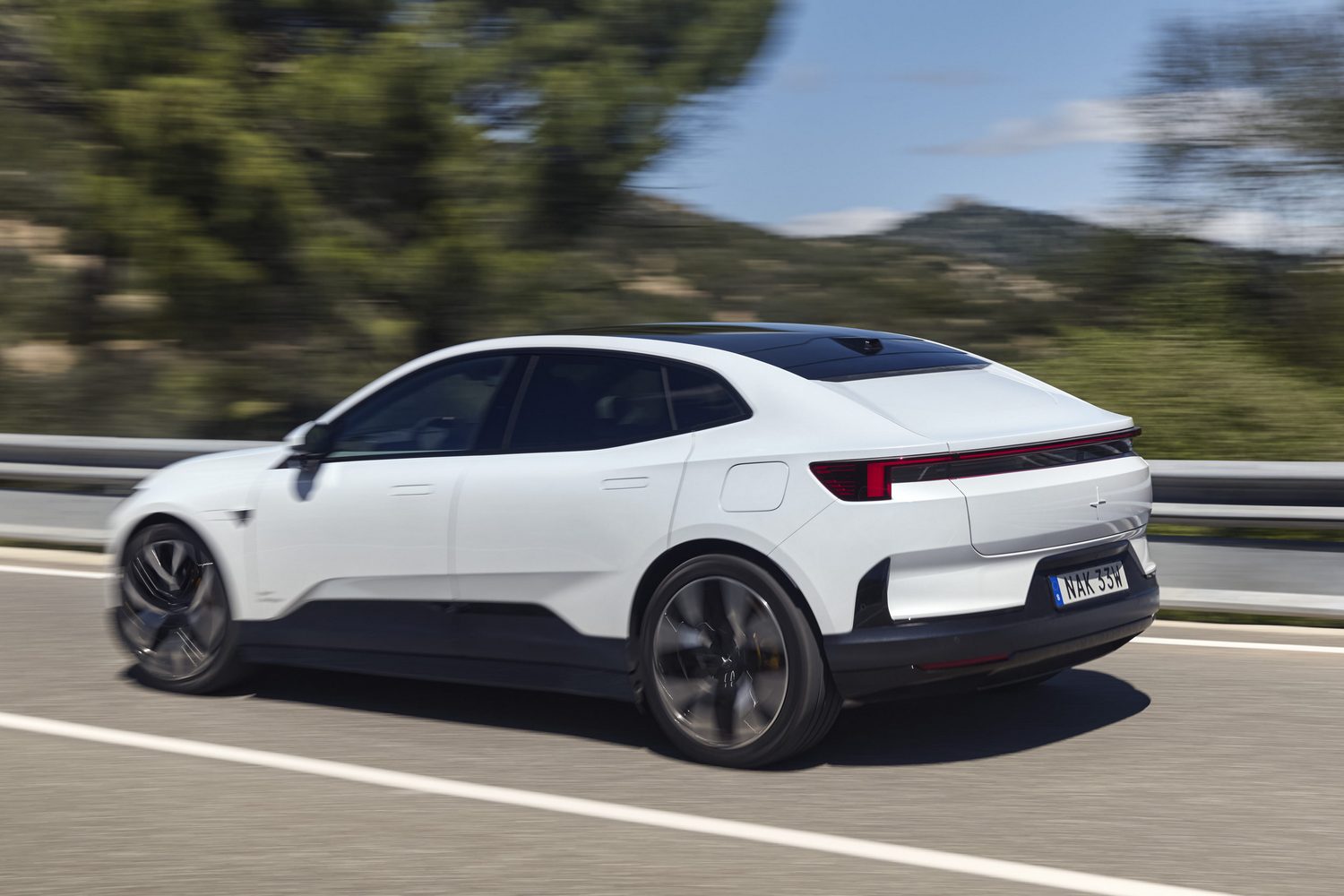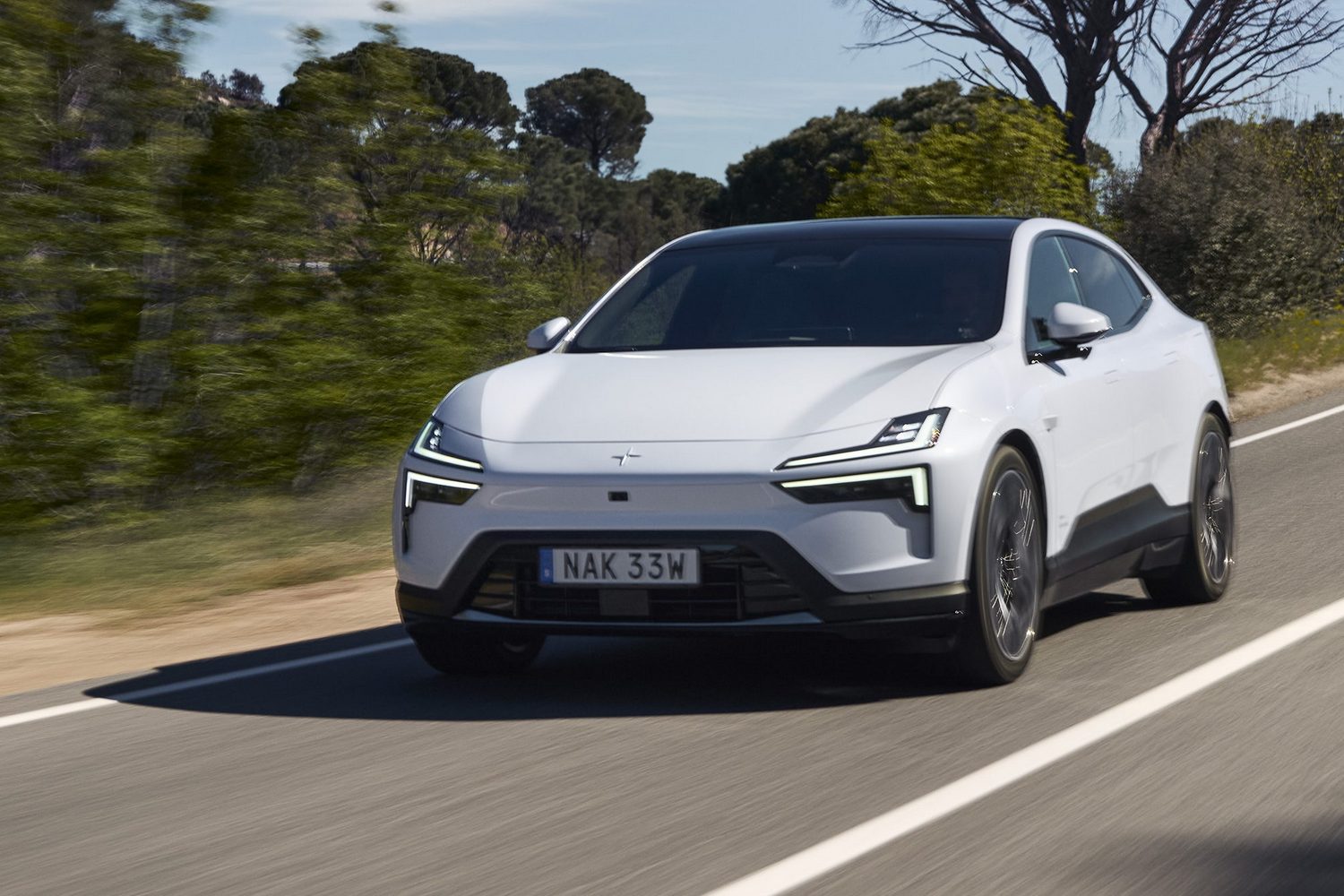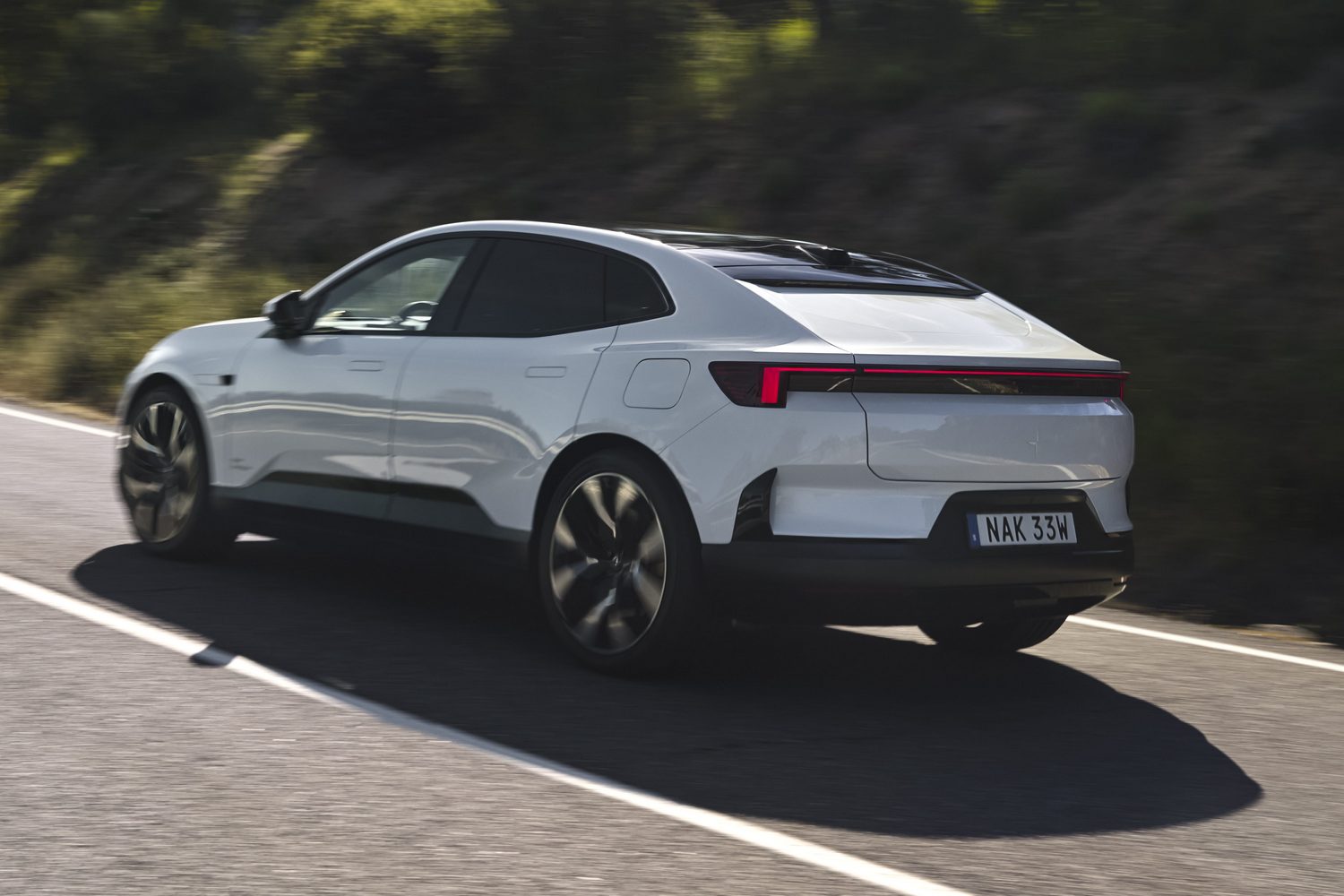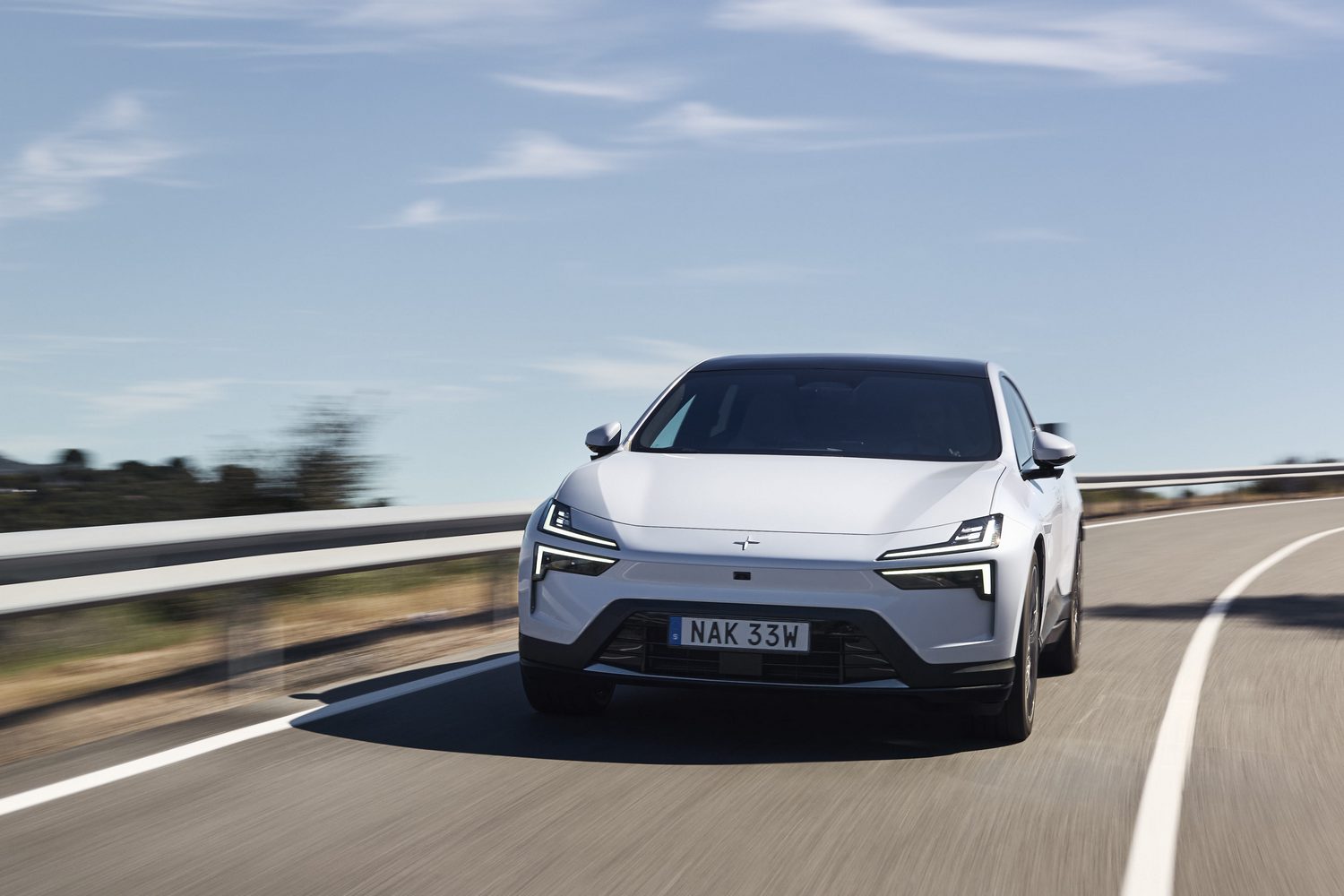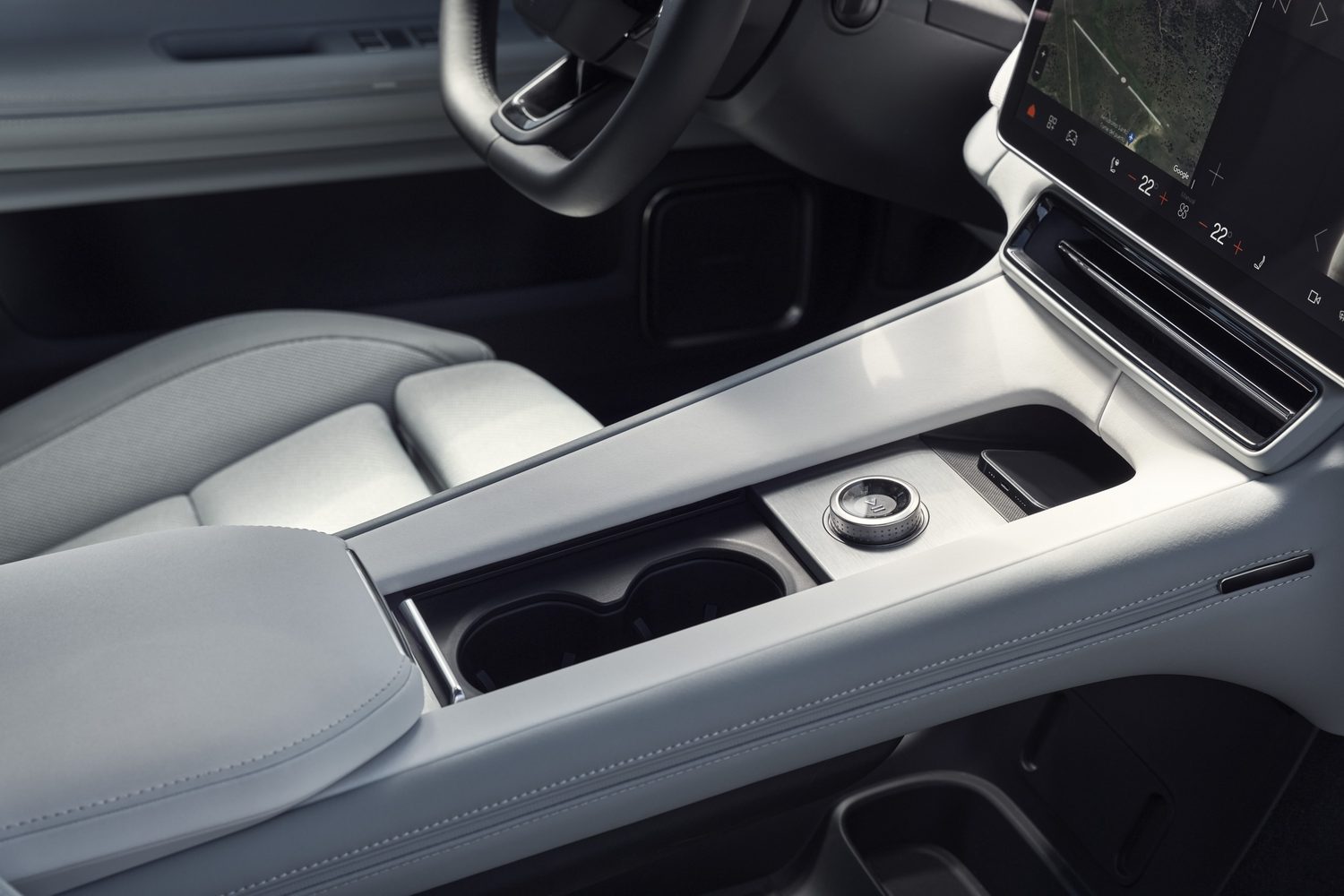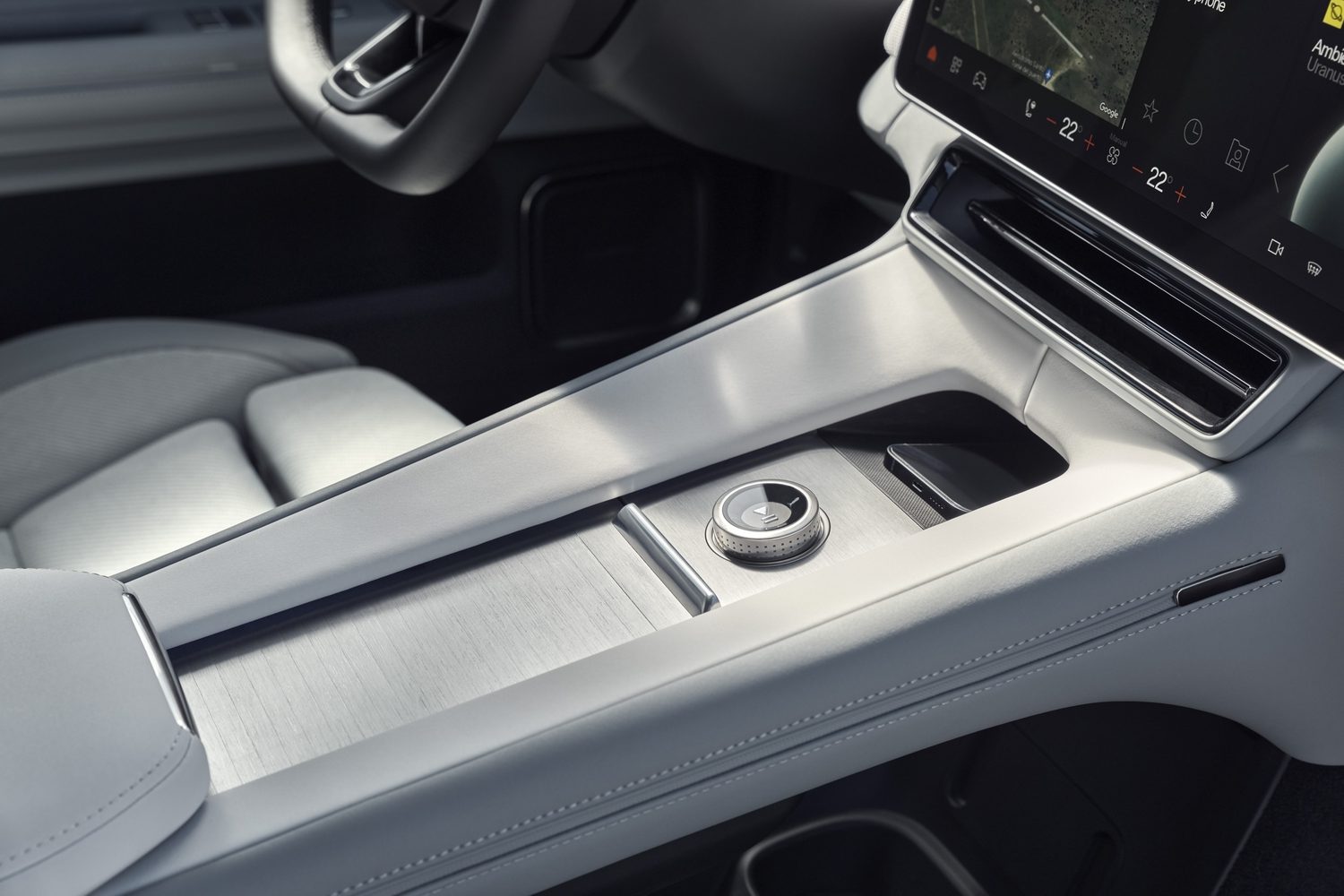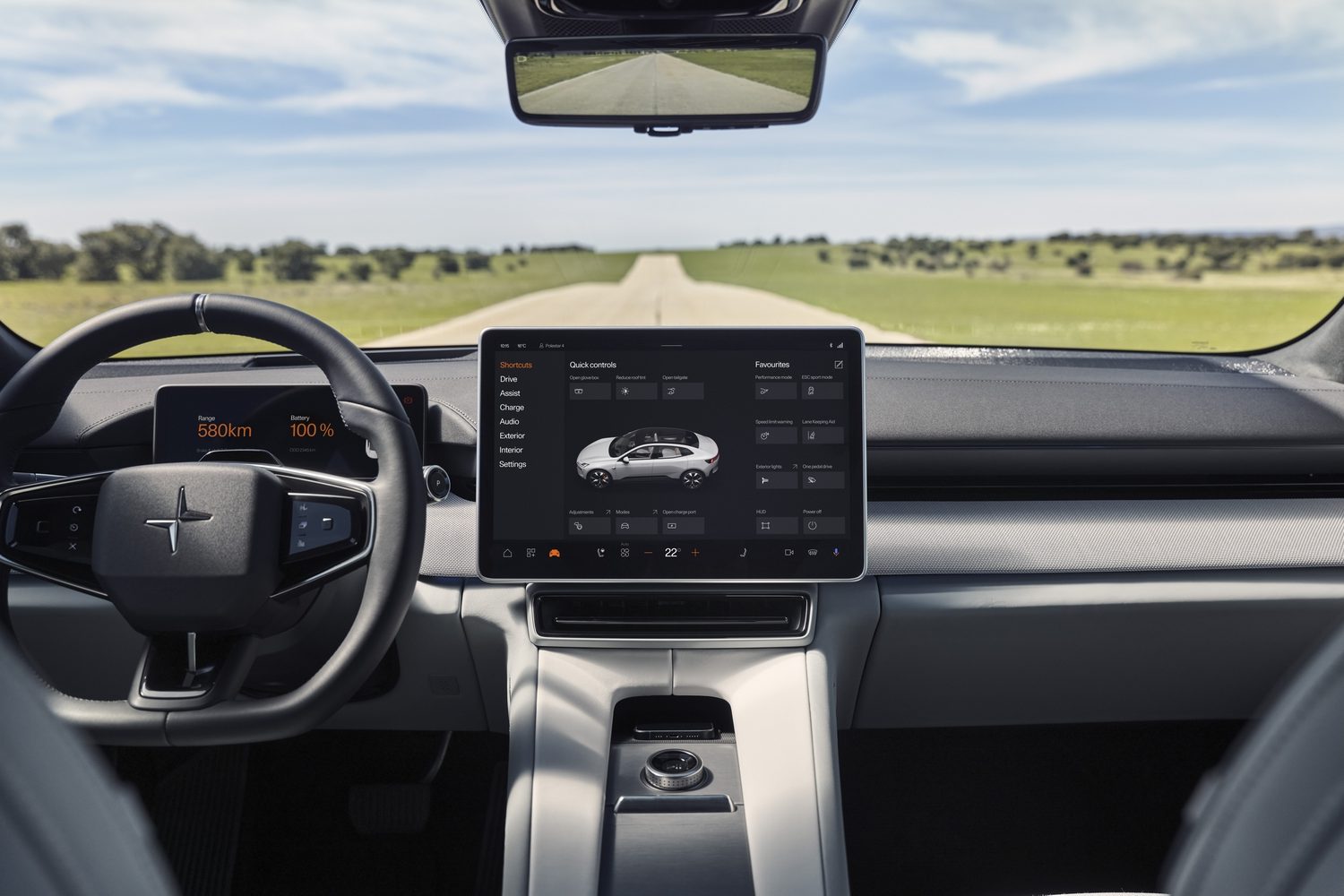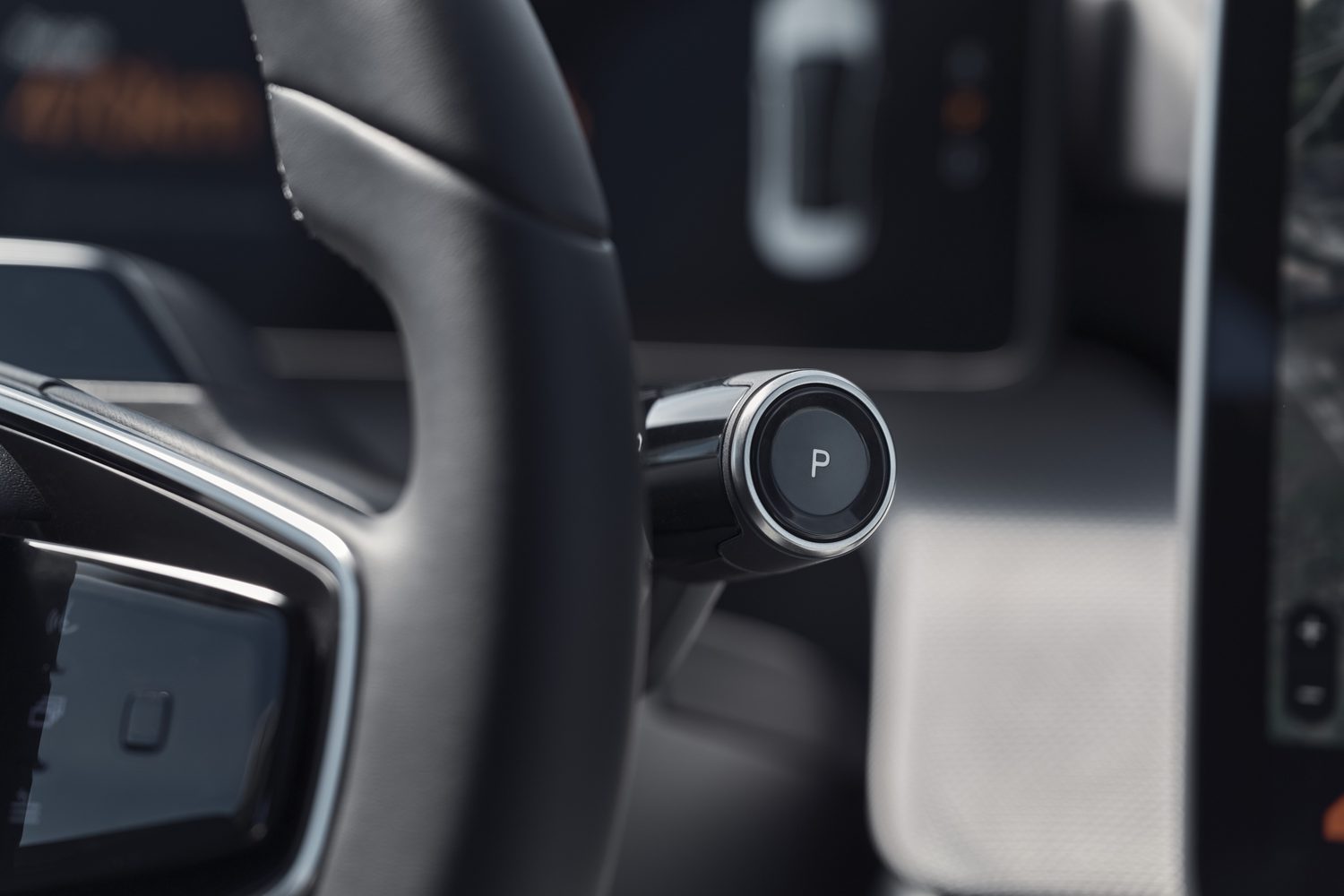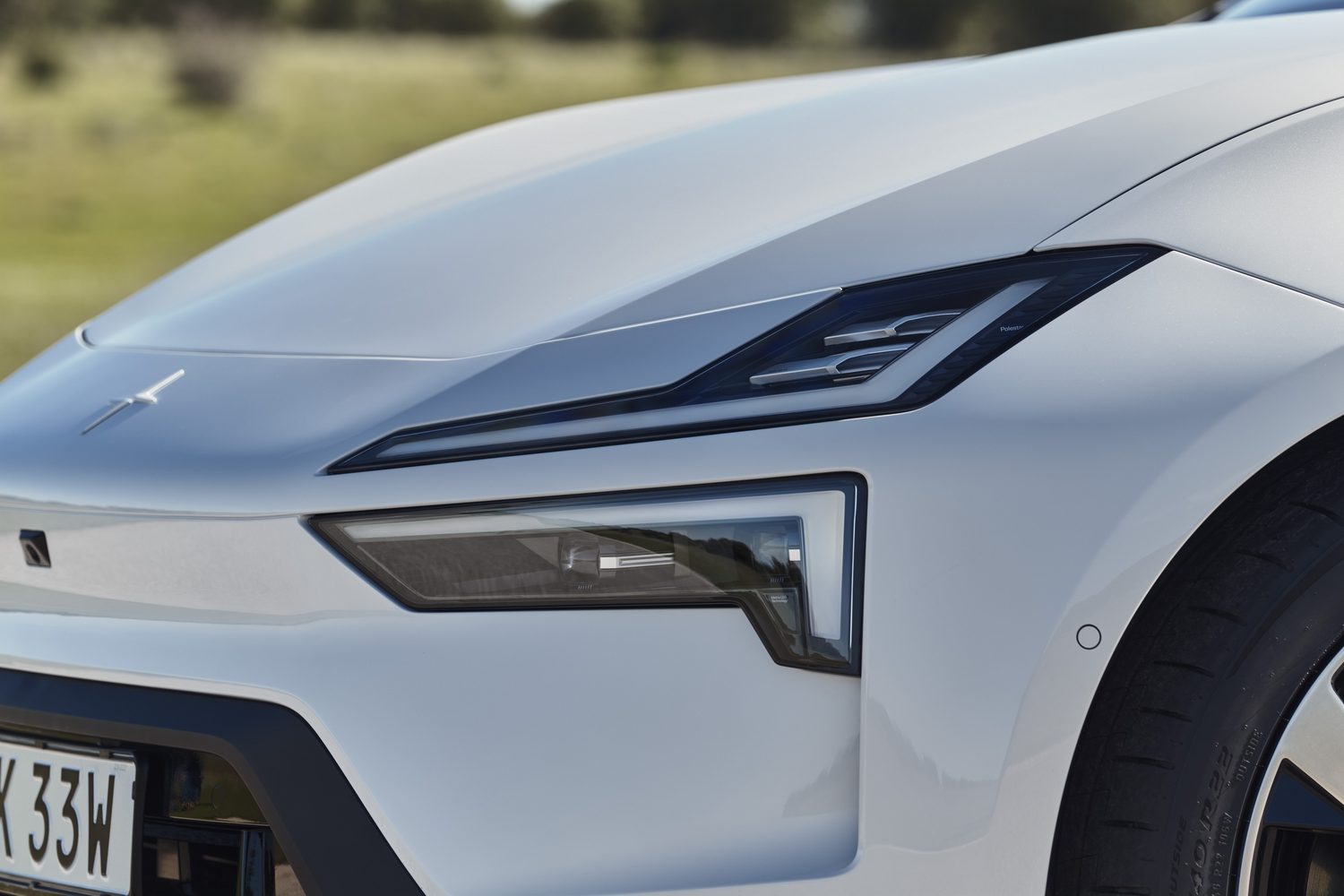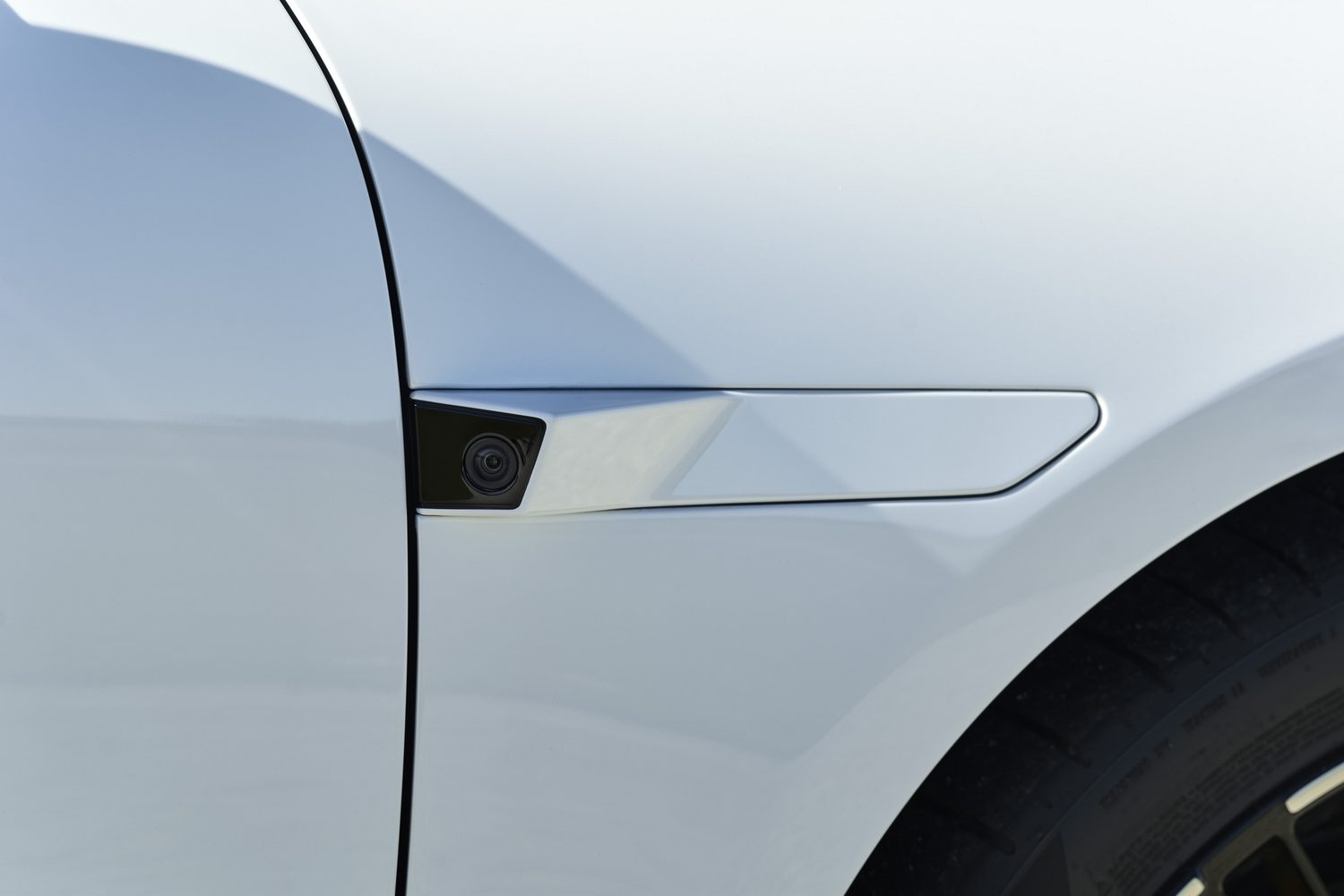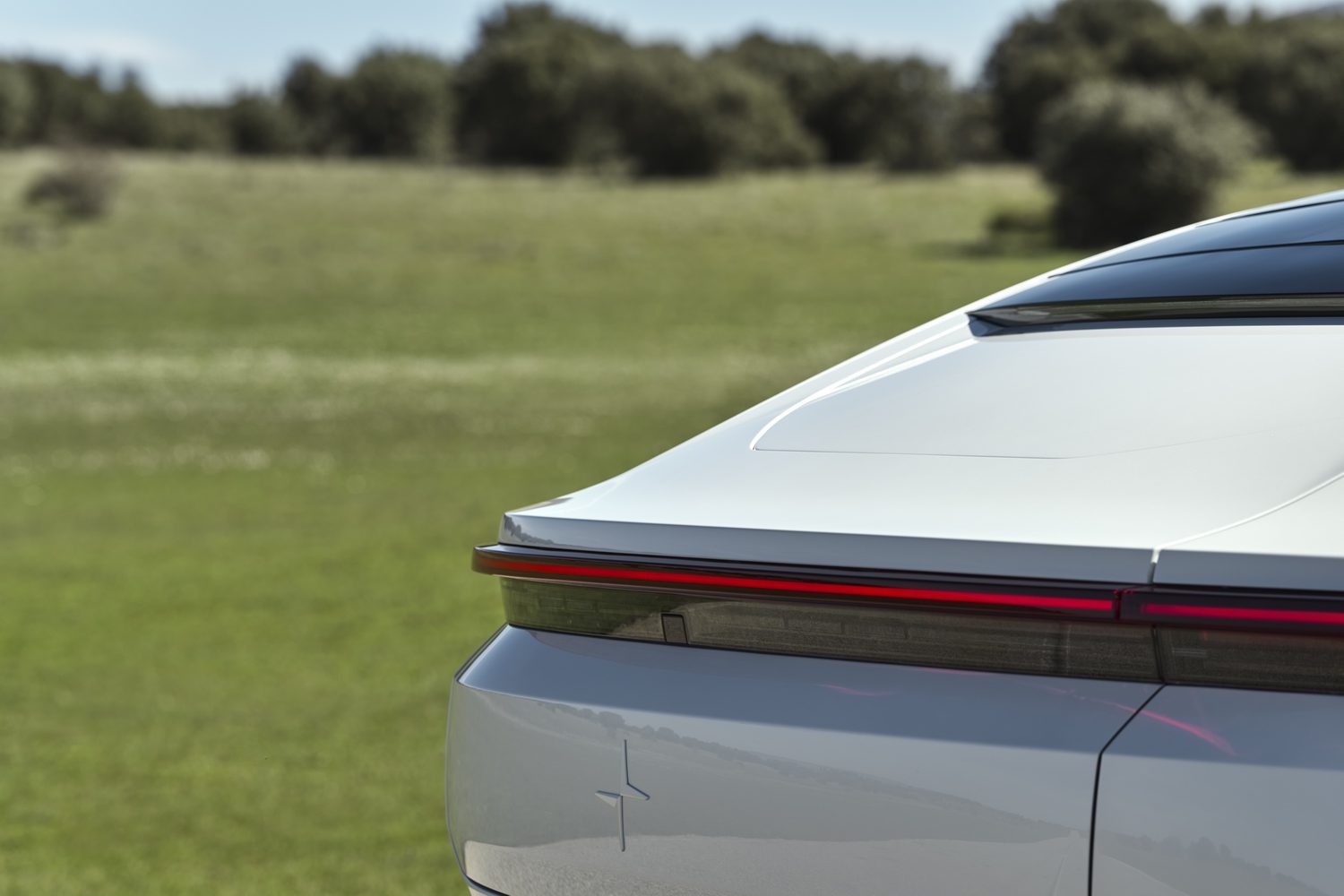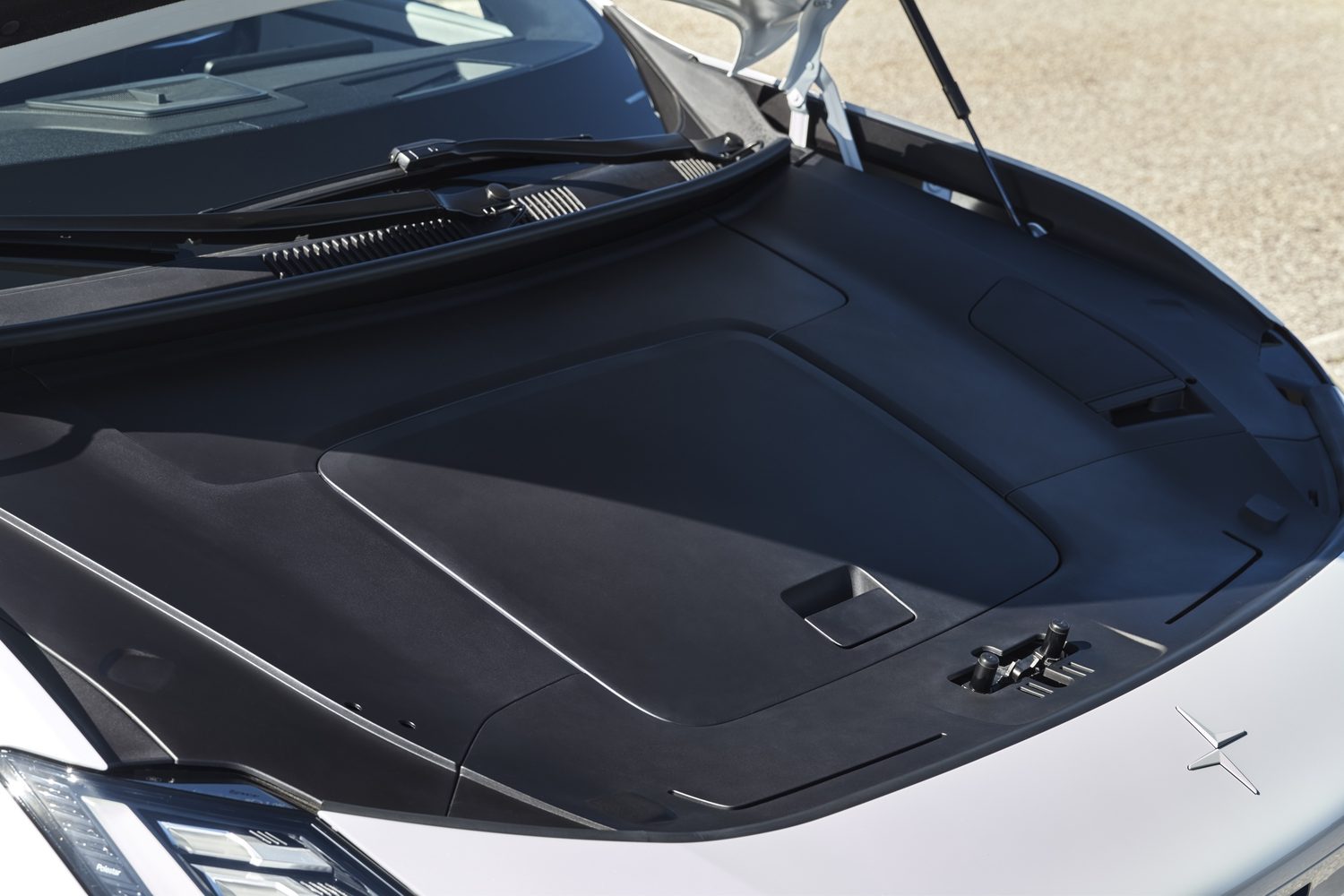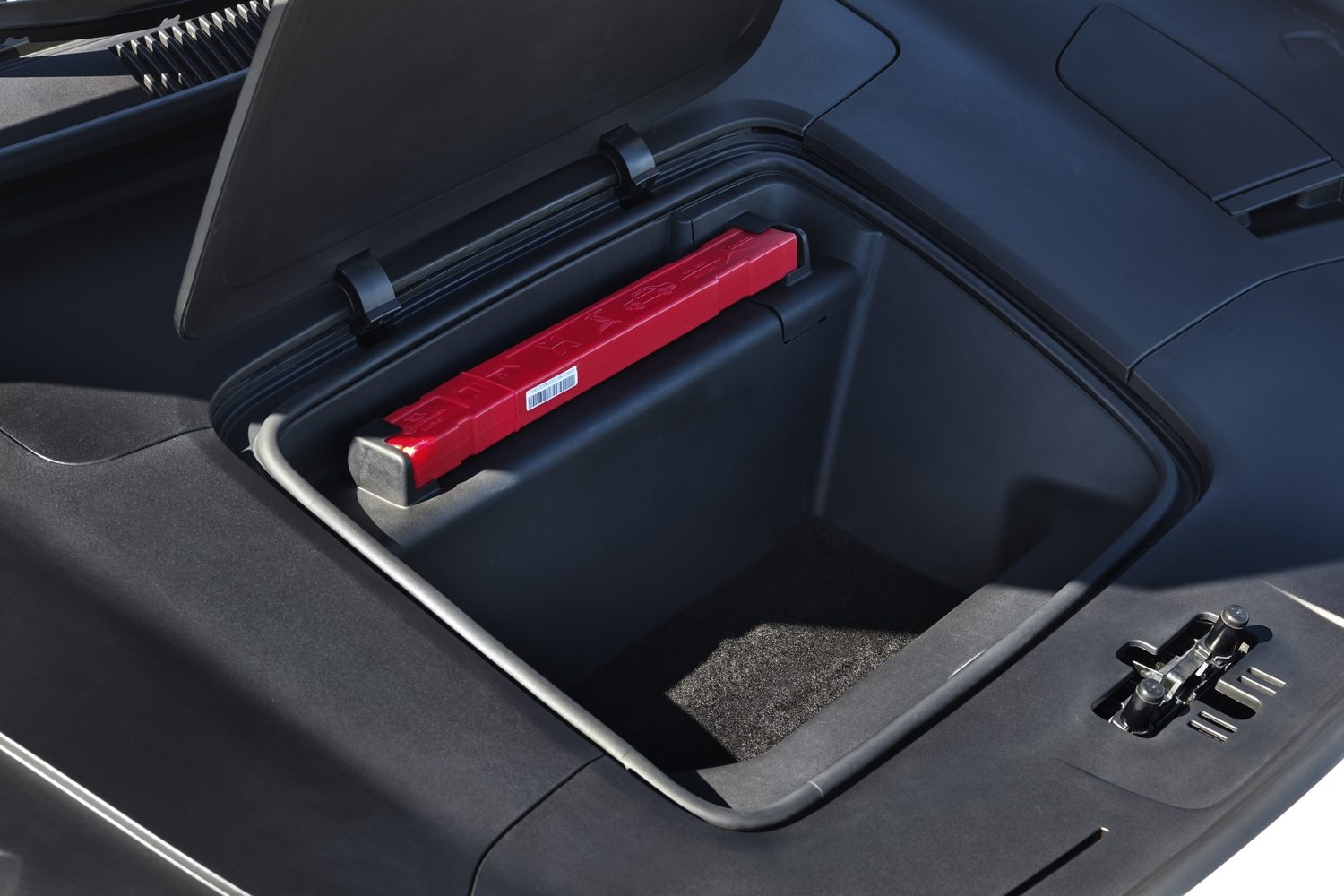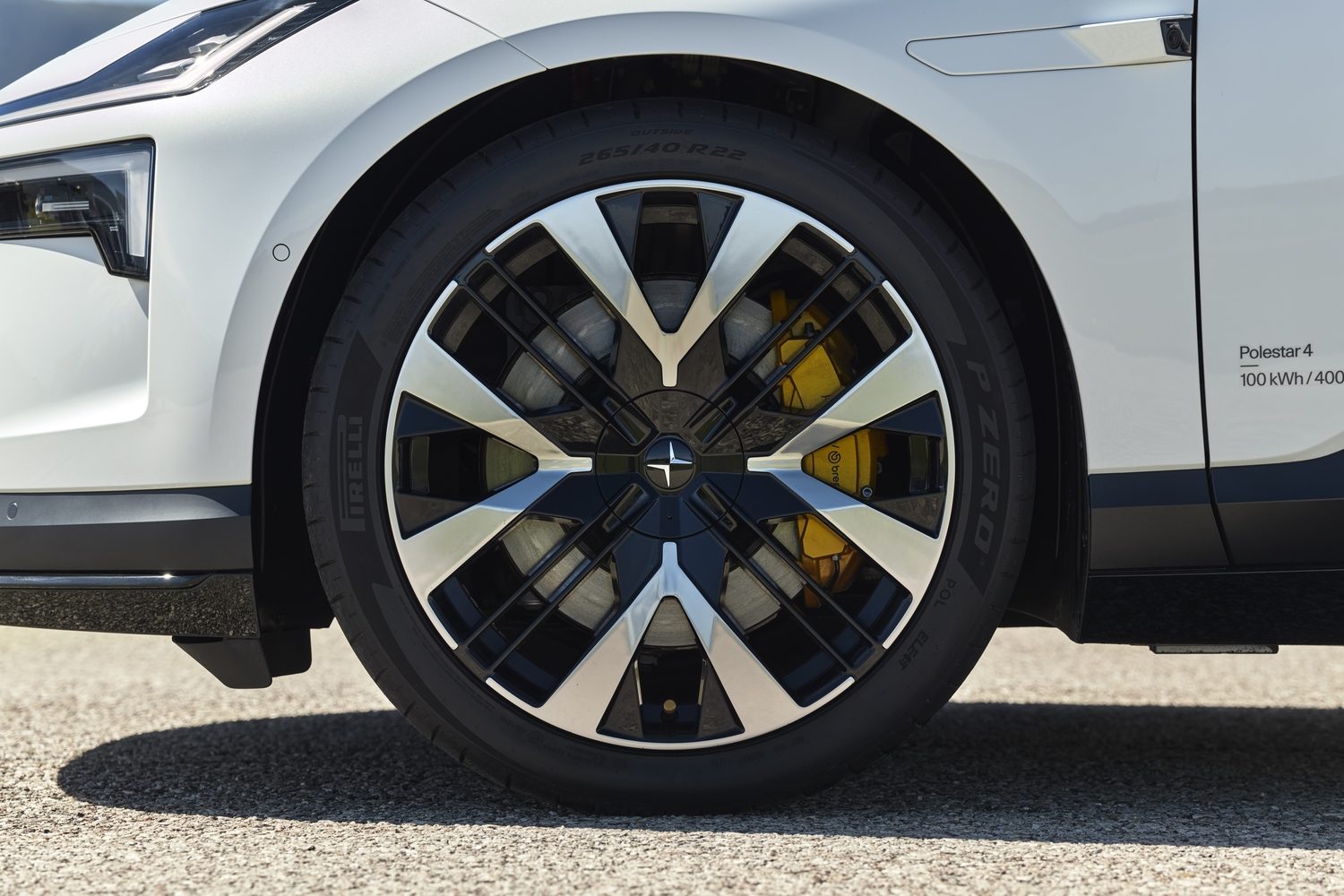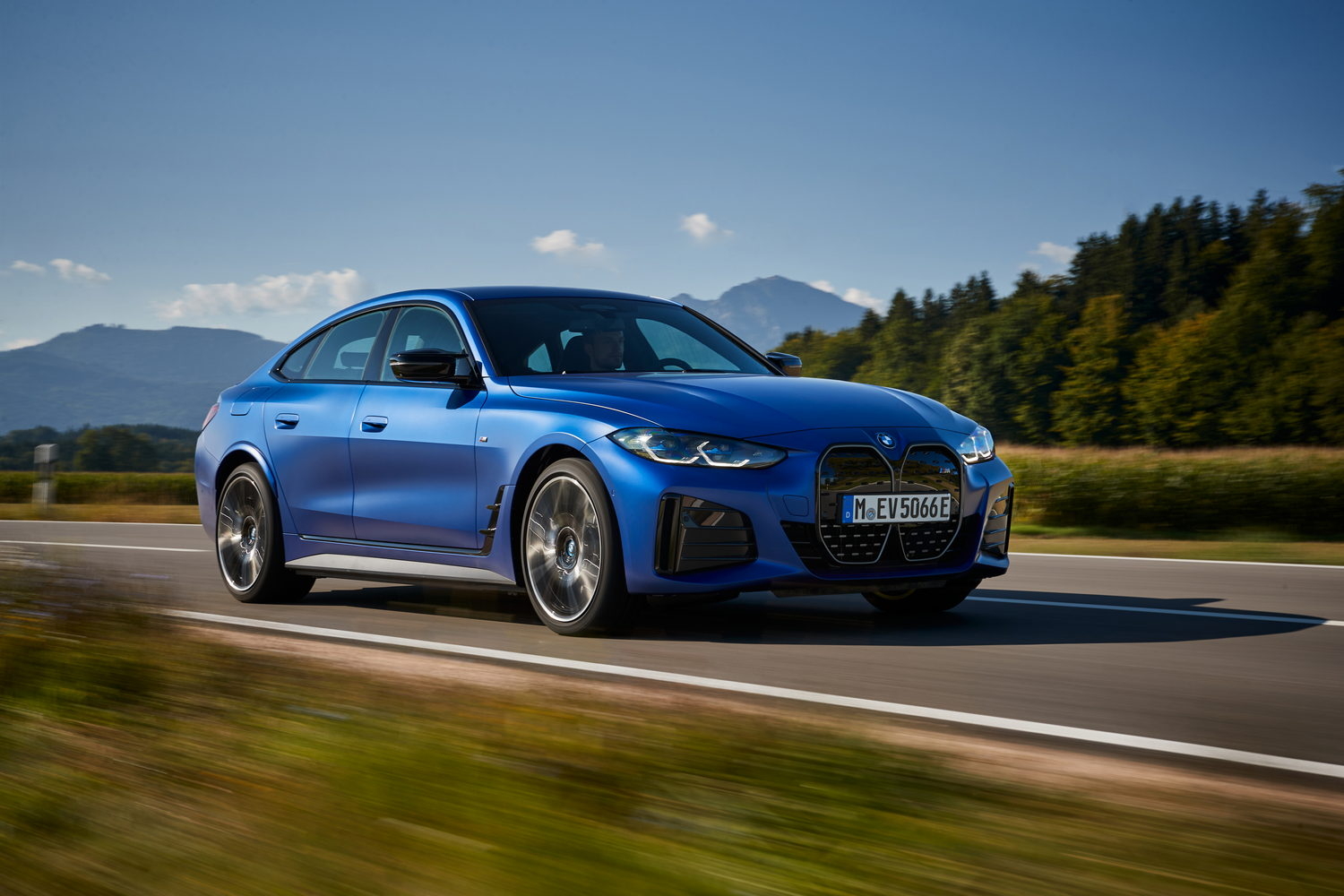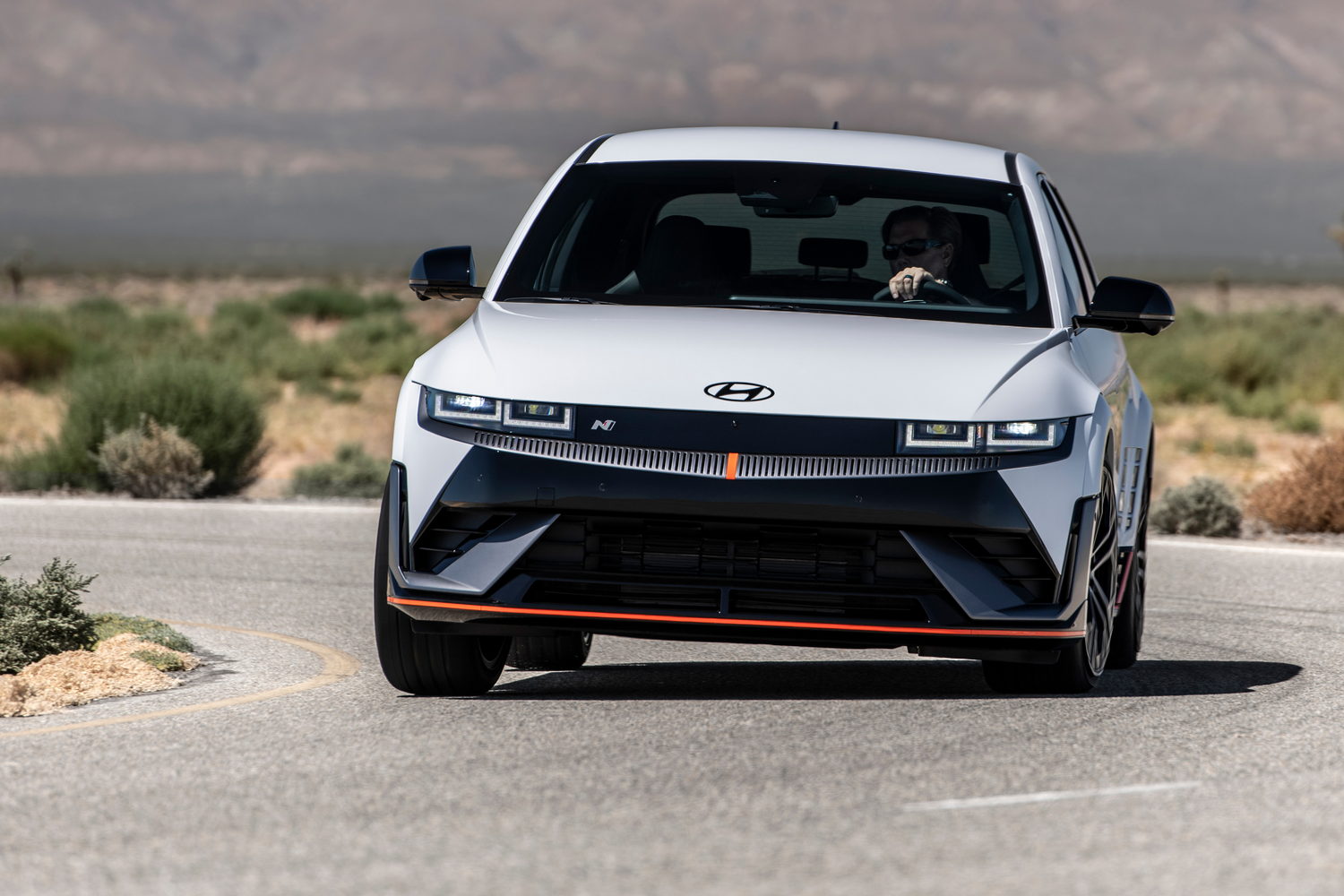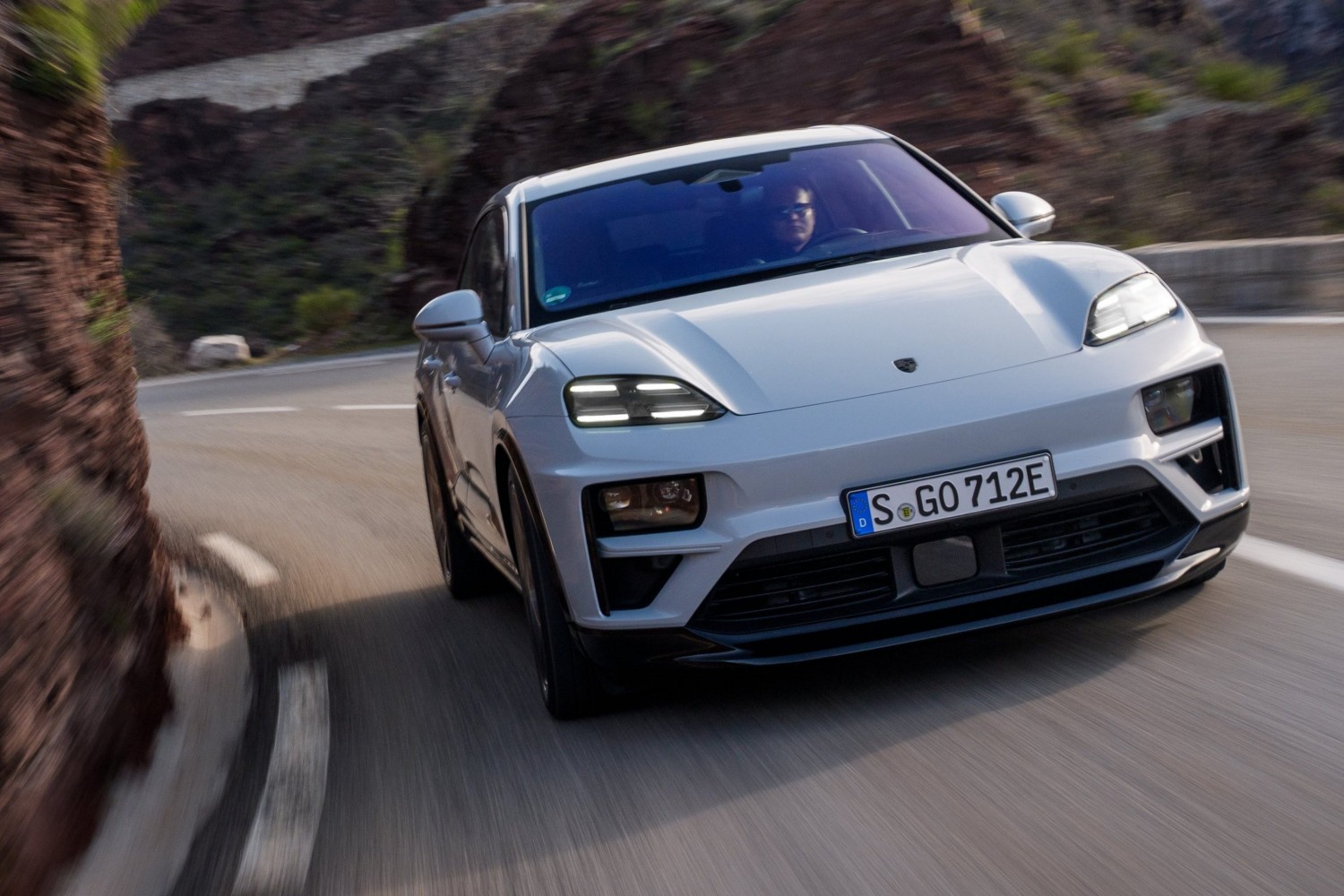Polestar’s 4 arrives merely weeks after the big new Polestar 3 went on sale (blame software delays in the 3 for that: the 4 is on schedule) and while its badging suggests it ought to be bigger and more expensive than the 3, it’s actually lower, lither and more affordable.
Yet it’s also faster and manages to successfully blur the lines between a crossover and a sports saloon, ending up potentially as a rival for the BMW i4 and the electric Porsche Macan, even if those two cars are priced at different levels.
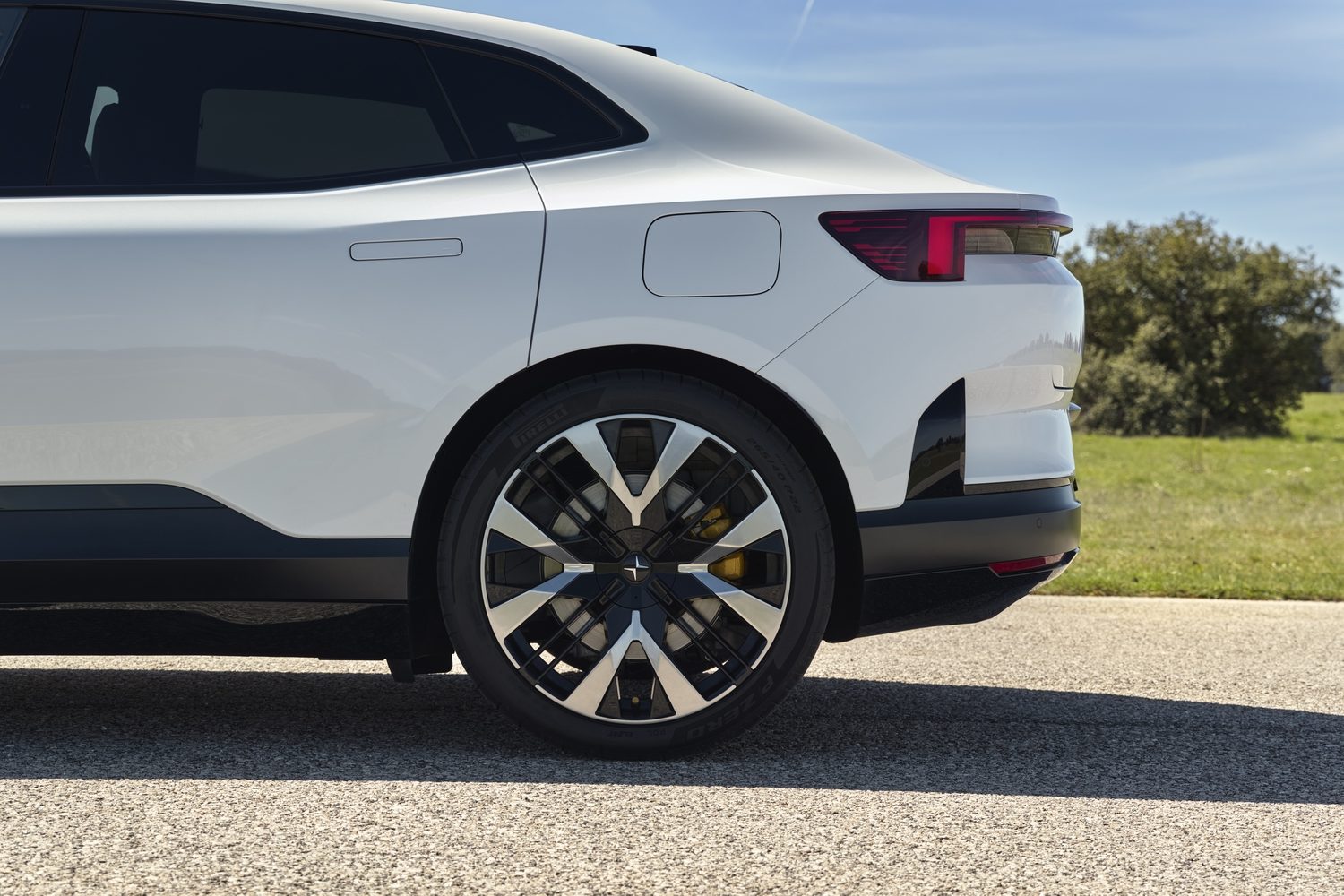
Clearly, one of the biggest talking points about the Polestar 4 is its lack of a rear window and the rear-facing camera system that replaces it, but this Long range Dual motor with Performance pack (yes that’s its official name) is a talking point all in itself - able to offer sub-four-second 0-100km/h acceleration but losing hardly any range (officially, at any rate) compared to the Single motor version.
Given how much more affordable this Polestar 4 is than the equivalent Porsche Macan or BMW i4 M50, it’s beginning to look like a bit of a performance bargain. Our first chance to get behind the wheel of the Polestar 4 was at its international media launch in Madrid.
How much is the Polestar 4 in Ireland?
While you’d not call it cheap, the Polestar 4 is good value. The starting price for the Long range Single motor model is €68,600, which compares well with the BMW i4 eDrive40. To get this Long range Dual motor model up to Performance pack spec, you have to add €5,000, though that does add Brembo brakes with gold-painted calipers, sportier suspension and 22-inch wheels, although that’s only possible once you’ve already added the Plus pack (including a Harmon/Kardon stereo upgrade, rear entertainment screens, Pixel LED headlights and 22kW AC charging) and that balloons the price to €87,500 in total. That’s still more affordable than the cheapest electric Porsche Macan and a match for the much less practical BMW i4 M50.
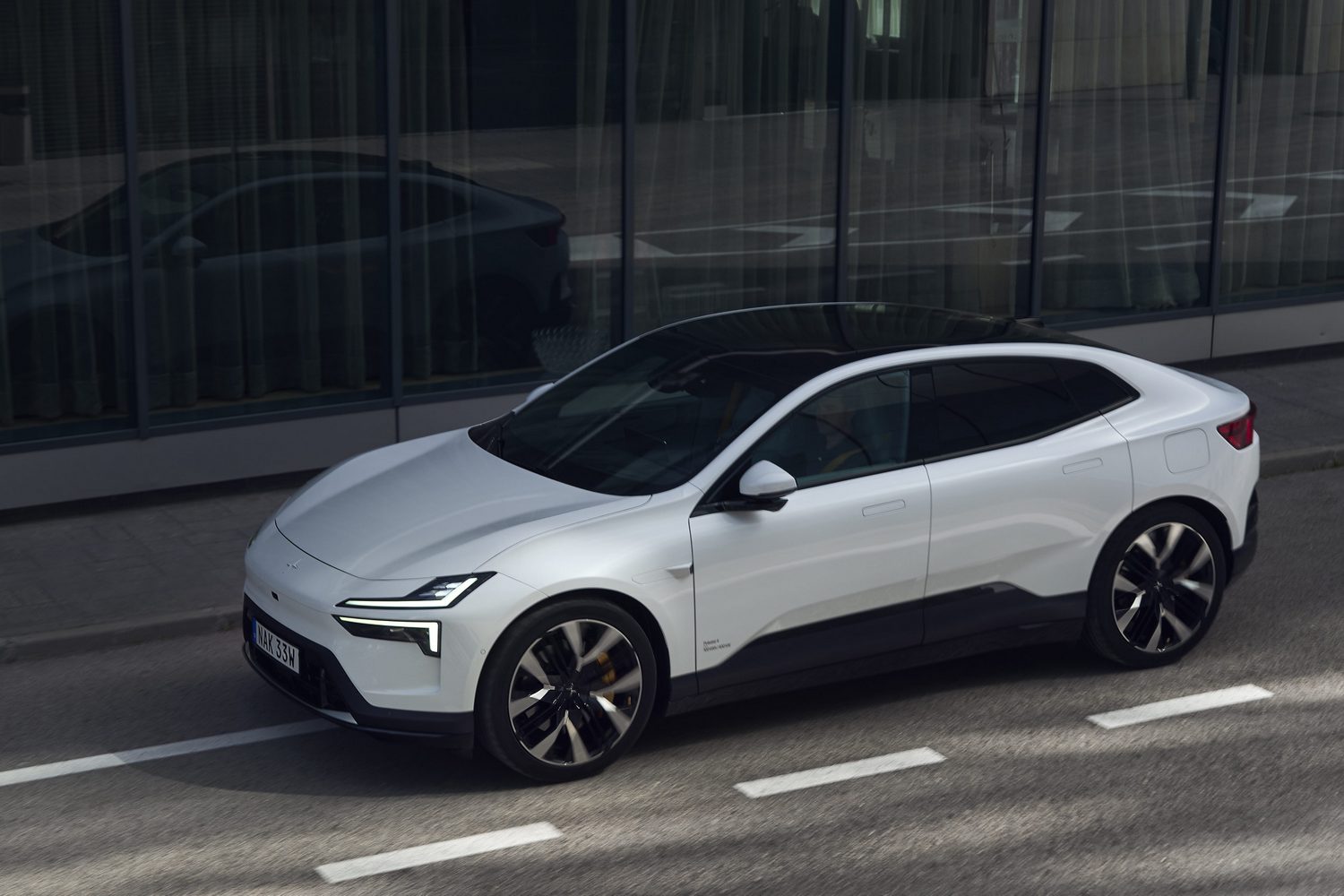
Standard spec for the Polestar 4 includes magnesium silver paint, bio-certified recycled interior trim, 20-inch alloy wheels, frameless door mirrors, LED headlights with active high beam, flush-fitting door handles, heated and electrically adjustable front seats, and a 15.4-inch touchscreen infotainment system.
A look inside the Polestar 4
There are no massive differences between the Performance pack model and the Single motor version of the Polestar 4 we’ve also tested, but it bears re-iterating that this is Polestar’s best cabin yet. It shrugs off the occasional sense of cheapness that infiltrates the cabins of both the more affordable Polestar 2 and the more expensive Polestar 3. The seats are wonderfully comfortable, the touchscreen is reasonably easy to find your way around and the space and comfort in the back seats is simply astonishing.
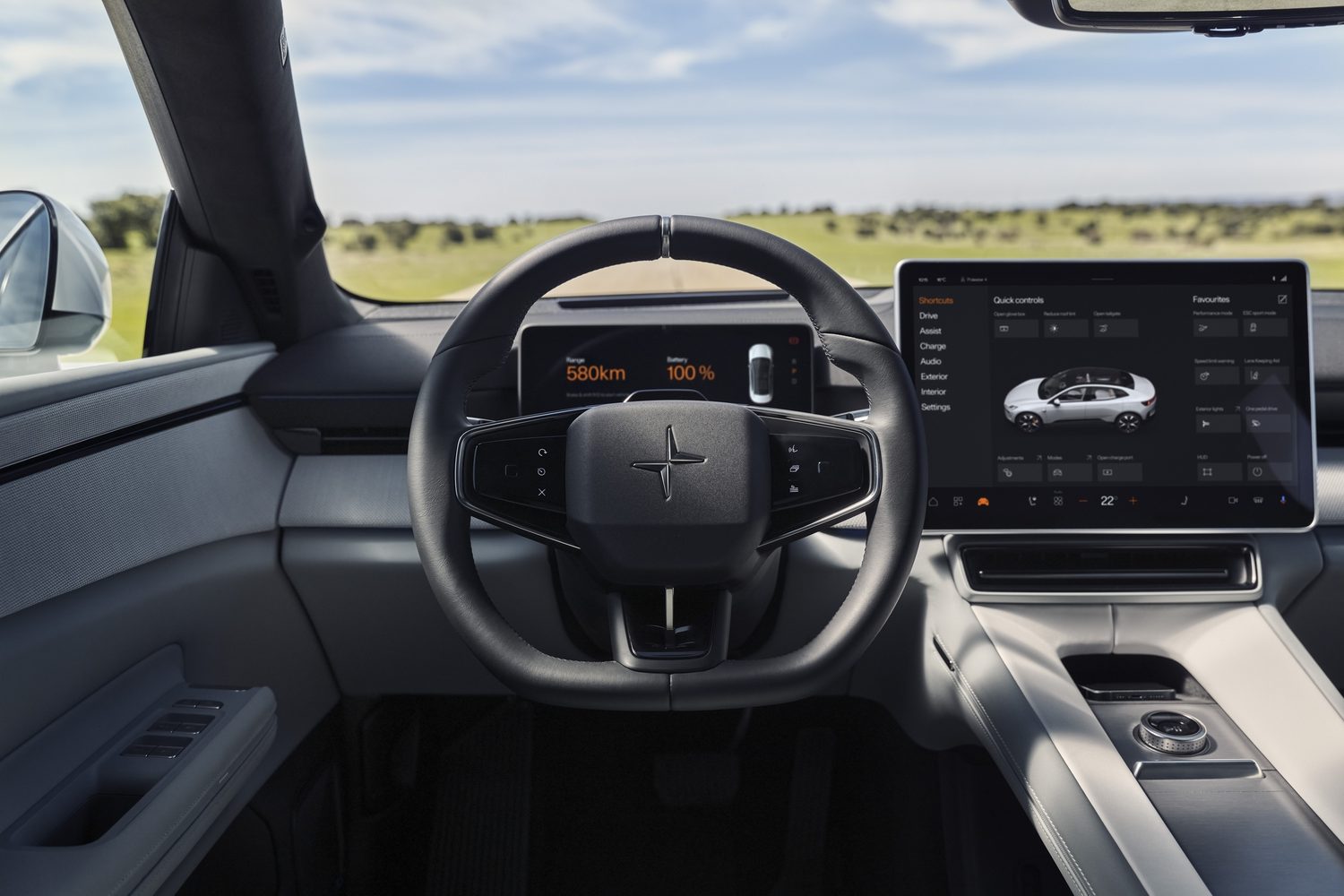
It is true that the lack of a rear window feels odd, and it’s impossible on first acquaintance for it to not catch the corner of your eye when you’re checking over your shoulder, which constantly reminds you how weird it is. But the rear-view camera works fine, though it’s worth noting that we only drove in dry, clear conditions - how it will fare with the muck, grime and rain of an Irish winter remains to be seen.
It’s also worth noting that while Polestar fits the 4’s interior with sustainably sourced and recycled materials - including a rather funky knit textile made from recycled PET bottles which looks and feels like the fabric of an expensive running shoe - there is the option of a Nappa leather upgrade.
That leather is supplied by Bridge of Weir, the renowned Scottish leather maker, and Polestar says that the hides come from beef herds and would otherwise be discarded and go to landfill, and that those herds are independently checked for the highest possible standards of animal welfare. Equally, the herds are sourced from within a 130km radius of Bridge of Weir’s headquarters in Renfrewshire, just west of Glasgow, further reducing the leather’s carbon impact. However, Polestar clearly wants you to pick the recycled fabrics instead and has priced the leather upgrade at a chunky level, also insisting that you pair it with the Plus Pack. This, says Polestar, is to focus buyer’s minds, and ensure that they really, really want the leather and are not just idly ticking an options box.
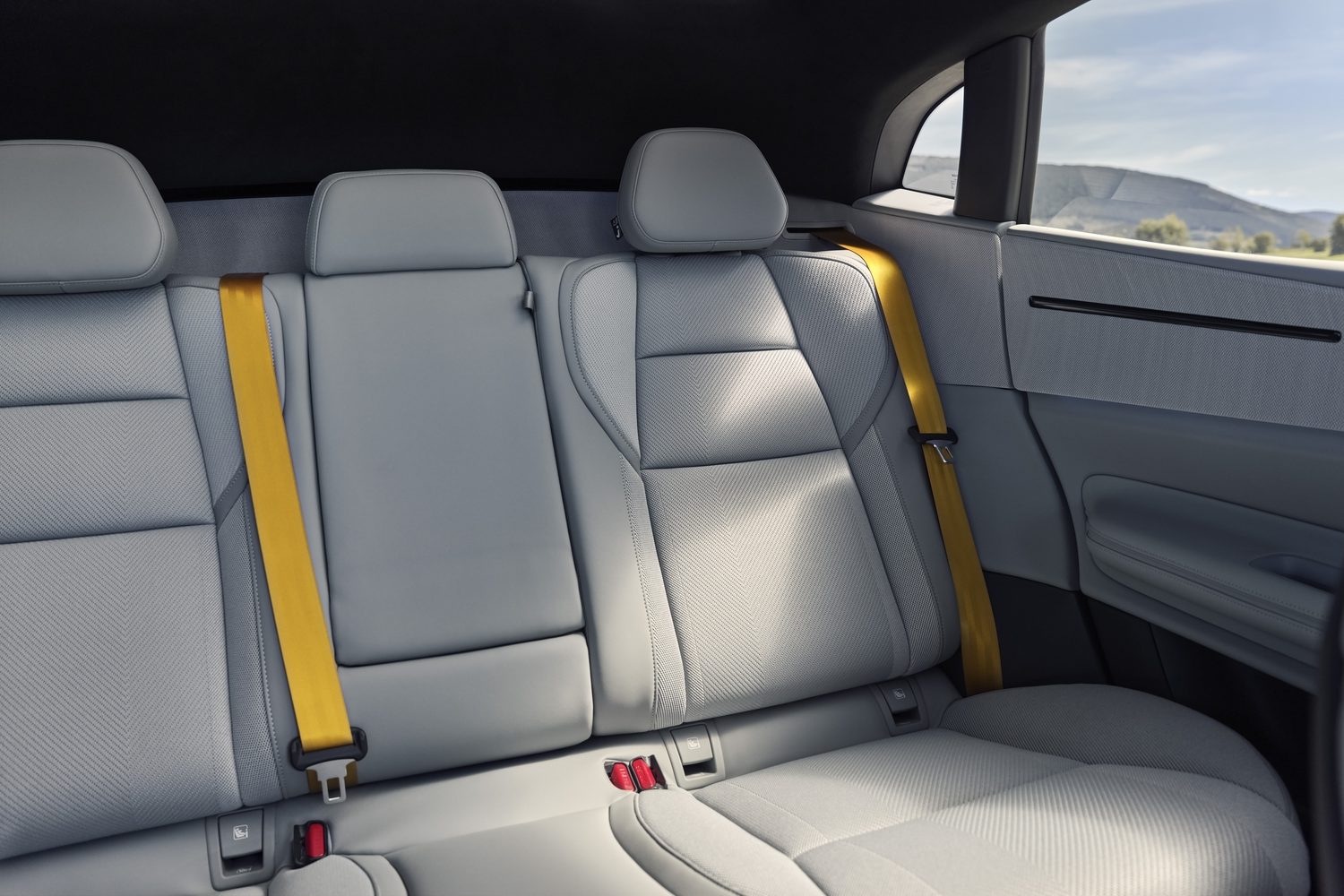
The Polestar 4’s on-board technology
Amid the cool, minimalist layout of the Polestar 4’s cabin, it is bristling with some very impressive tech. That’s controlled by the 15.4-inch touchscreen in the centre of the dashboard, although thankfully Polestar has also given the driver a proper digital instrument display behind the steering wheel, which takes a lot of the load off the main screen, and which, in conjunction with the head-up display projecting onto the windscreen, means you spend much less time with your eyes off the road than you would in a rival model which puts everything onto the centre screen.
The software which runs the infotainment is sourced from Google, although the ‘skin’ laid on top of that tech is Polestar’s own, and there’s a noticeably clean and simple layout, helped by Polestar’s proprietary text font. The screen can be customised into different short-cut ‘tiles’ which makes finding the most-used functions pretty simple, although things do get complex - as they do on almost any touchscreen - once you start to dig a little deeper. Indeed, Polestar tells us that there are more than 3,000 possible individual screens and menus built into this system, so you could be sitting there for a solid week to get through them all.
It is a bit of a disappointment that, especially in this Performance pack model, there isn’t a single ‘Sport Mode’ function. Instead, you have to work through individual settings for the steering, suspension and electric motors. While that means that you can tailor each to your individual preference - which is good - it’s a bit time consuming when you just want a quick burst of sportiness for a particular sequence of corners.
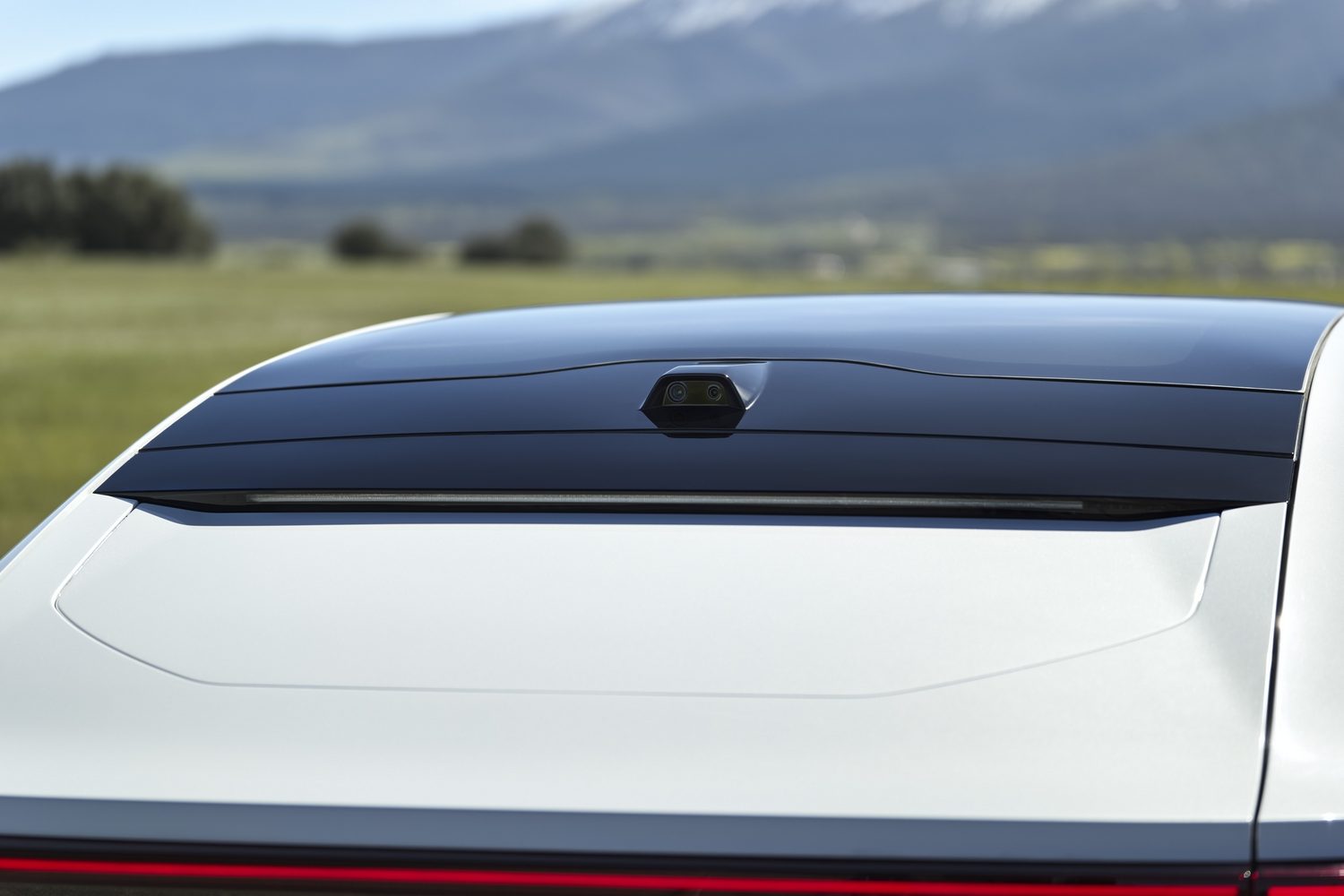
The rear-facing camera which feeds its digital display to the rear-view ‘mirror’ actually does work well, and there’s a conventional mirror underneath the digital overlay if you want to check on back seat occupants, but without a dedicated camera cleaning system, there’s the danger of your view being obstructed in poor weather conditions.
One touch we do love is the way you adjust the cabin lighting. Instead of just picking a colour, you instead pick a planet of the solar system - Earth for green, the Sun for yellow and so on - which is kind of gimmicky and charming in roughly equal measure. Meanwhile, the 1,300-watt Harmon/Kardon stereo upgrade is well worth the cash and fills the Polestar 4’s cabin with a rich, warm sound. It also uses individual headrest speakers, allowing the driver to take a phone call while everyone else carries on listening to music or podcasts.
Driving the Polestar 4 Long range Dual motor Performance pack
Well, it’s certainly quick. With up to 544hp and 686Nm of torque available, the Polestar 4 Dual motor was never going to be sluggish, even with a hefty 2,300kg kerb weight. In the current high-performance electric car idiom, it absolutely leaps off the line, almost as if the battery was bypassing the tyres and pushing you forward with the sheer thrust of its unleashed energy. As with any fast EV, though, you do soon tire of this frenetic straight-line performance, not least because it’s pretty tough on both your inner ear and your stomach. Equally, any passengers on board will have to be forewarned to brace their heads against the seats before you try any acceleration sprints, or they’ll end up with something close to concussion.
After you’ve done this a couple of times, the novelty wears off and you just start to wonder where all your range is going (more on which in a moment). Equally, you start to wonder why car makers insist on creating EVs with such savagery in acceleration terms, when all most of us really want is just decent performance and better range.
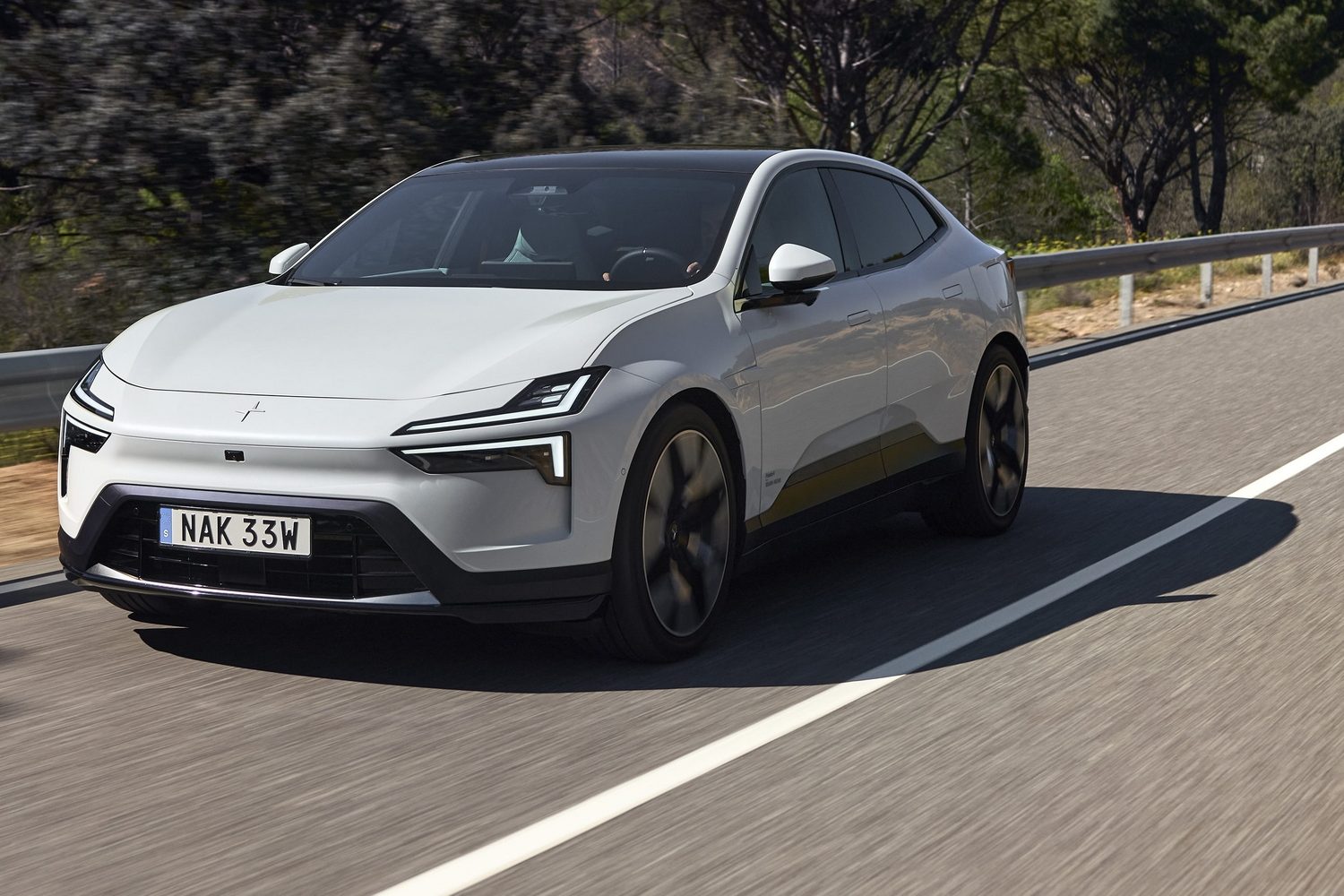
The Polestar 4 does make up for that a bit in the corners, though. Its low roofline (a direct corollary of the way the rear of the cabin is designed and the consequent lack of rear window) means that you don’t feel perched up in the air as you do in many SUVs, so the 4 takes on more of the mien of a low-slung sports saloon. The steering feels sharp and responsive, even if the 4’s wheel rim is rather puffier and more pillow-like than the slim, tactile rim of the bigger Polestar 3. You can easily set the 4 up into a gorgeous canyon-carving rhythm when the road gets twisty, even if ultimately its weight will start to pull the nose wide of a longer corner. It’s a very satisfying car to drive.
Well, aside from the ride quality. All Polestars are relatively stiffly-sprung, but the Polestar 4 is more so, and the Performance pack model stiffer still. And it has to cope with the movements of its big 22-inch wheels. All of which adds up to too much bump and thump unless the road you’re on is exceptionally smooth. It was bad enough on the pretty decent roads of our Spanish test route, so lousy Irish roads will likely give the Polestar 4’s suspension a workout, and your spine will get one at the same time. We suspect that a car without the Performance pack will be better suited to everyday Irish use.
What’s the Polestar 4’s range?
The regular Polestar 4 Single motor model proved really quite efficient on our test route, averaging 18kWh/100km - close to its official figure. This Performance pack version was less efficient. In fact, our test route average stood at 25kWh/100km, reducing the range to less than 400km rather than the almost-600km achieved on the WLTP cycle. OK, so we were making copious use of the available power and acceleration, which people won’t do most of the time, but it was a relatively disappointing figure all the same.
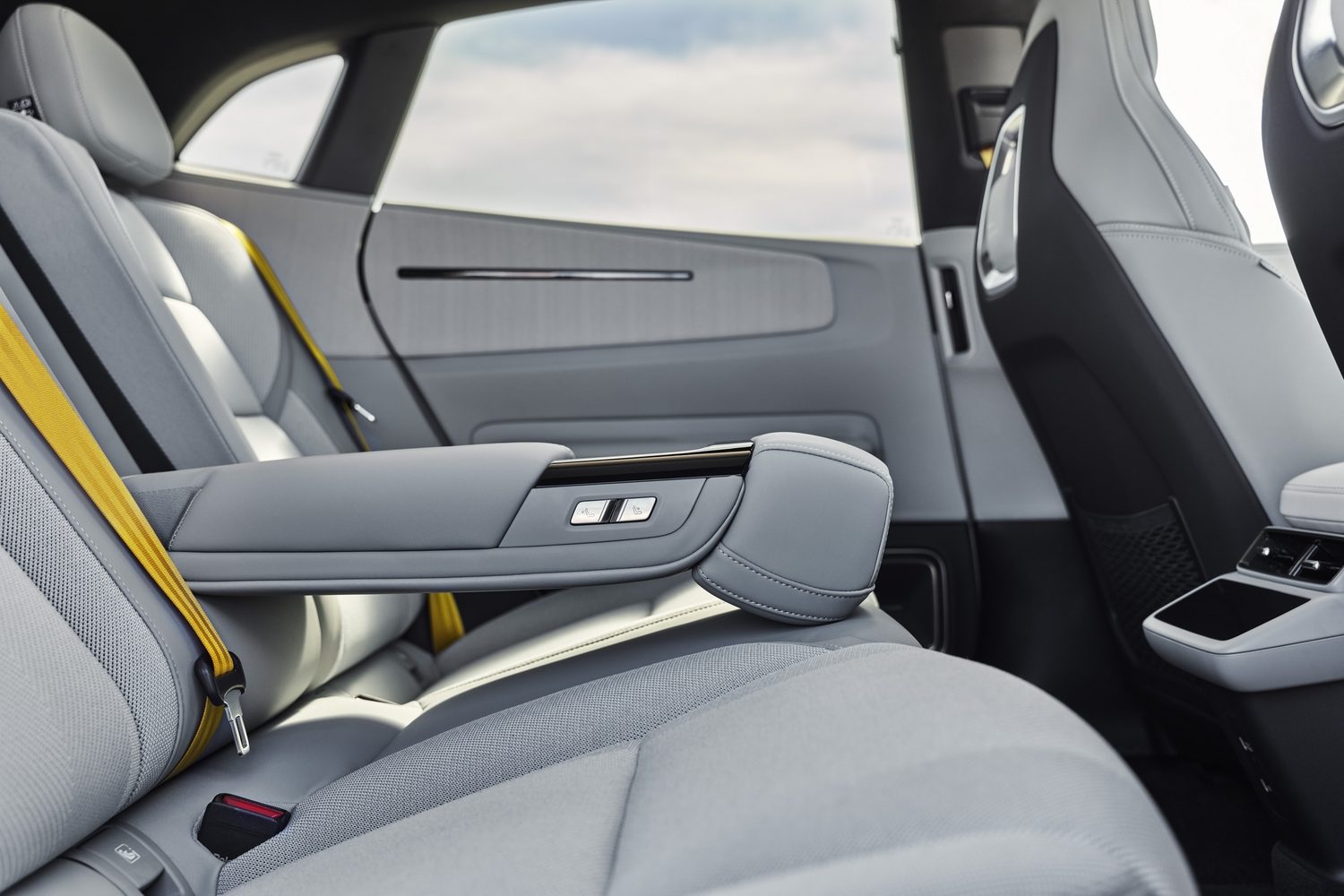
How many child seats can I fit in the Polestar 4?
As standard, there are two ISOFIX points in the Polestar 4 in the outer rear seats. That’s a little underwhelming, and it’s a shame that there isn’t a matching set of anchors in the front passenger seat. That said, the copious legroom in the back means that fitting in even the bulkiest rear-facing seat you can think of won’t be a problem. The seat is quite wide, but it’s also sculpted in the middle so don’t count on fitting an extra booster there until you’ve tried it out for size yourself.
How safe is the Polestar 4?
The Polestar 4 hasn’t yet been tested by Euro NCAP. While we can’t give a definitive answer yet, it’s likely that the Polestar 4 will prove to be exceptionally safe. While Polestar is a separate brand, it is still closely related to Volvo, so we’d expect the 4 to provide excellent passive safety.
In active safety terms, the 4 comes with the expected active cruise control, lane-keeping steering (not too intrusive a system, either), speed limit monitoring, driver attention monitoring and blind spot warnings. You can upgrade to the Pilot Pack which includes active lane changes, and which will eventually include (thanks to over-the-air software updates) some hands-off driving on motorways, while there’s also interior radar which can warn you if you’ve accidentally left a pet - or even a person - inside the car.
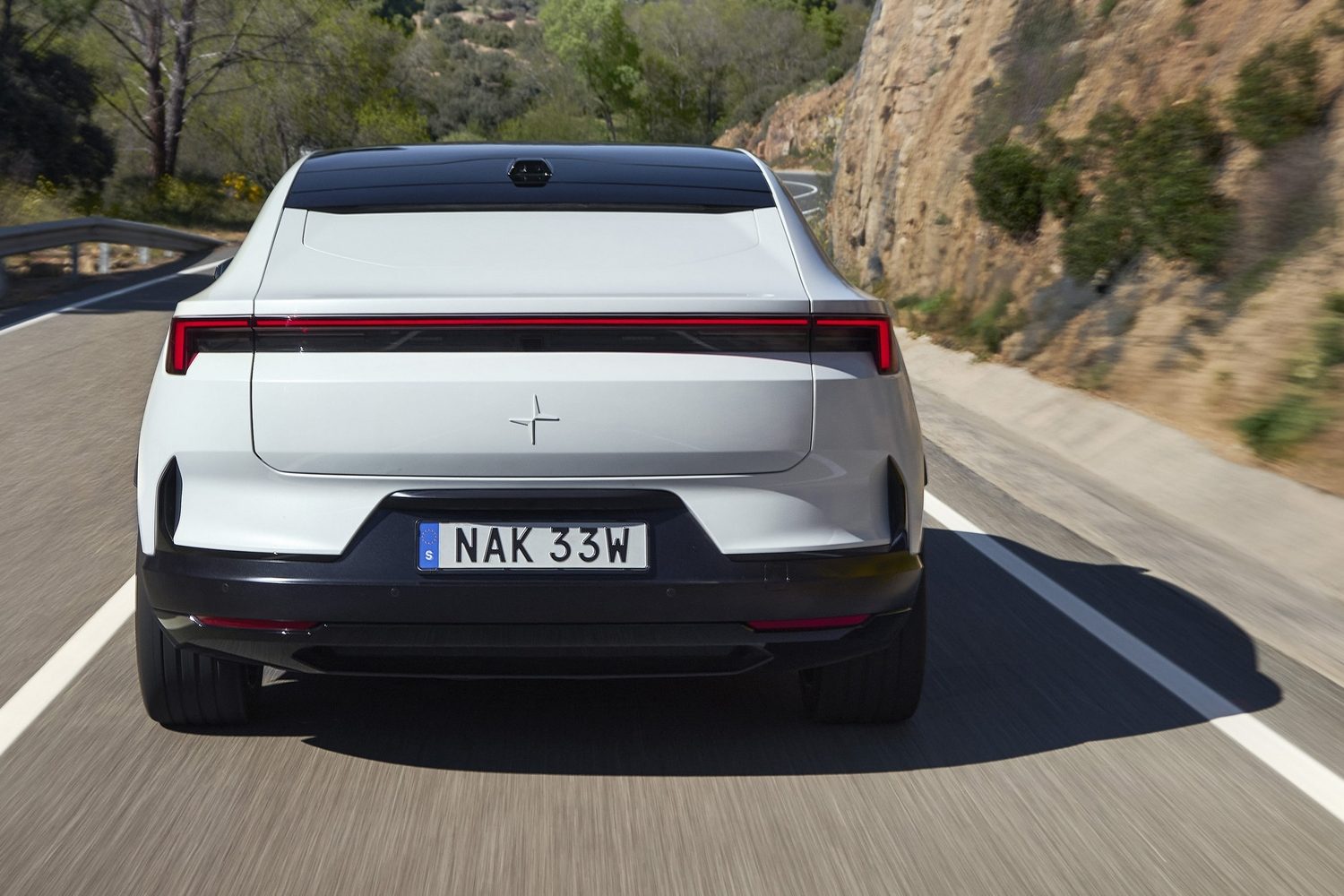
The reasons you'd buy a Polestar 4
Unquestionably, the 4 is Polestar’s best car yet. It’s sleek and handsome, good to drive, roomy and practical, and not outrageously priced. It also has excellent performance and a potentially long range. We just can’t help thinking that this Performance pack model is over-egging the pudding somewhat, and we’d trade in its sheer speed for the greater comfort and range of the standard Single motor version.
Ask us anything about the Polestar 4
If there’s anything about the Polestar 4 we’ve not covered, or you’d like advice in choosing between it and other cars, you can avail of our (completely free) expert advice service via the Ask Us Anything page.

